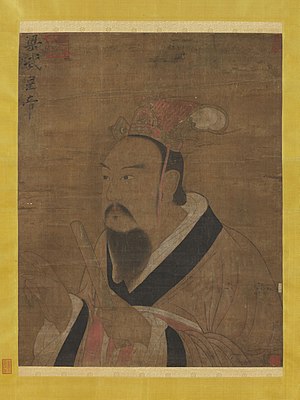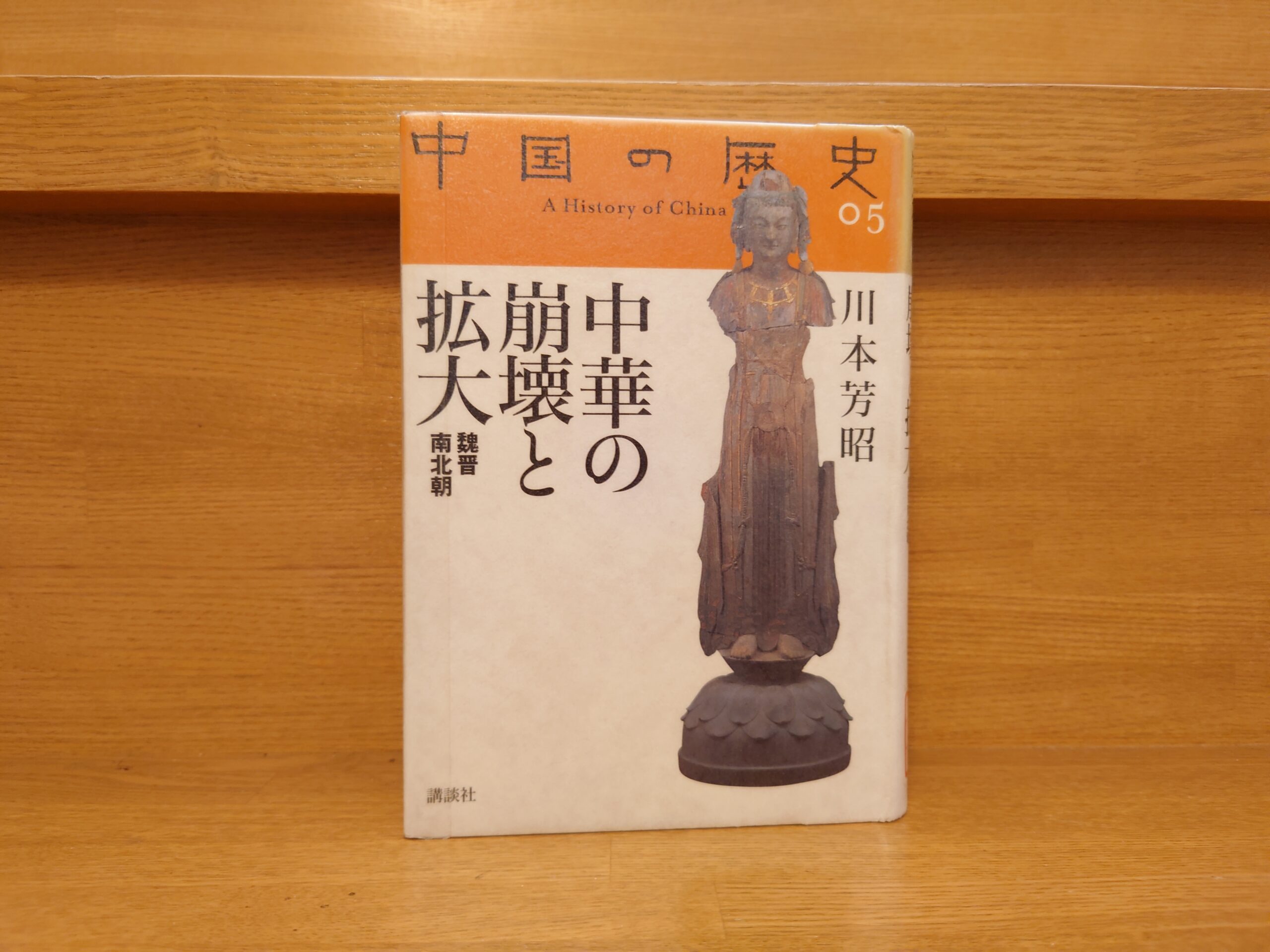Summary and Comments on "History of China 05: The Collapse and Expansion of China: Wei, Jin, and the Northern and Southern Dynasties" - The Liangwu Emperor, who brought about the rise of Buddhism, also makes an appearance!
Introduced here is "History of China 05: The Collapse and Expansion of China, Wei, Jin, and Nanbokucho" by Yoshiaki Kawamoto, published by Kodansha in 2005.
Let's take a quick look at the book.
Volume 5 covers the period of great division from the destruction of the Later Han Dynasty in 220 to the unification of the Sui Dynasty (589).
The great empire of 400 years of the Former Han and Later Han collapsed in the confusion at the end of the Later Han Dynasty, and after the Three Kingdoms Period in which Wei, Shu, and Wu fought each other, it was reunified by Sima Yan of Jin Dynasty, but soon plunged into the period of great confusion of the so-called "Five and Six Kingdoms" invaded by Xiongnu, Xiongbei, Jie, Qiang and other foreign tribes.
North China was eventually unified by the Northern Wei Dynasty (439), which was founded by the Sunbei, and was followed by the Eastern Wei, Western Wei, Northern Qi, and Northern Zhou dynasties. Meanwhile, in Jiangnan, the Han dynasty Song was followed by Qi, Liang, and Chen, and the dynasties changed one after another. As the Hu-Han powers vied with each other, the magnificent cave temples of Yungang and Longmen were built in northern China, and in Jiangnan, the famous Six Dynasties culture of Tao Yuanming, Gu Gaiji, and others flourished, centering on Jiankang (present-day Nanjing).
During the Wei, Jin, and Nanbok dynasties, the "world order" of East Asia was formed, with the emergence of the Yamataikoku and the Five Kings of Japan in the Japanese archipelago, and the rise of Koguryo, Baekje, and Silla in the Korean peninsula. The "Chinese," which formed the center of the world order, repeatedly split and fused, expanding as non-Han peoples became Han (Chineseized) and forming a new Chinese world. This book traces the origins of the East Asian world order, with an eye on Chinese consciousness and ethnic issues that continue to the present day.
AmazonProducts Page.
This book is a treatise on the period of upheaval from the end of the Three Kingdoms Period to the unification of China in the Sui Dynasty.
As a student of Buddhism, what is most interesting to me in this book is the Liangwu Emperor.

The Liangwu Emperor is essential to the development of Chinese Buddhism. The book begins by describing this man as follows
When discussing the Wu emperor, it is important to mention his fervent belief in Buddhism. The Wu emperor had always had an understanding of Buddhism, but from around the middle of his reign, his faith became even more fervent and he became a devout follower of Buddhism. He introduced Buddhism into the world of politics, and through this, his faith rose to the level of seeking the realization of an ideal society.
He built many temples and held great pujas, and he replaced ritual offerings to ancestors (called "blood feasts"), which in China were originally supposed to be offered in the form of cows and other living creatures, with fruits and other foods, as it was against the Buddhist precept of nonviolence against killing.
Kodansha, Yoshiaki Kawamoto, History of China 05: The Collapse and Expansion of China: Wei, Jin, and Nanbokucho, p. 157
It is easy to see how fervently the Liang Wu emperor believed in Buddhism. In China, Confucianism and Taoism were the basic principles of political rule, but it was here that he brought Buddhism into the country with overwhelming fervor.
Looking back, Buddhism was introduced to Japan in 538. It was during the reign of Emperor Liang Wu. It was this trend in China that led to the introduction of Buddhism to Japan and its subsequent use as a political philosophy.
It is also explained that the rise of Buddhism was not merely due to the beliefs of Emperor Liangwu alone, but also had the following background.
Buddhism spread to China and explosively expanded its line of teaching during the Wei, Jin, and Southern and Northern Dynasties periods covered in this volume. This can be clearly seen from the many Buddhist relics that remain in China to this day, and the reason why Buddhism was able to take root in the land of China in such a way can be attributed to the fact that the people of this turbulent period of the Wei, Jin, and Northern and Southern Dynasties, which began following the collapse of the stable Han Empire that had existed for 400 years, sought for their salvation from a foreign religion, Buddhism. This is because the people of this tumultuous period of the Wei, Jin, and Northern and Southern Dynasties, which began with the collapse of the Han Empire, which had been stable for four hundred years, sought salvation from a foreign religion, Buddhism.
Buddhism was also an easily accepted religion for the non-Han Chinese who migrated to China during this period, as it was a religion that originated in a foreign country. This was the background for the wide and deep penetration of Buddhism into China during this period, and it was precisely because of this that the rulers of this period sought to win the hearts and minds of the people by introducing Buddhism into the country. The specific examples of this are discussed in Chapter 2 of this book, but in light of this historical trend, the act of renouncing Buddhism by the Wu emperor can be seen as one of the consequences of this historical situation.
Kodansha, Yoshiaki Kawamoto, History of China 05: The Collapse and Expansion of China: Wei, Jin, and Nanbokucho, p. 159.
The historical background of the time played a major role in the rise of Buddhism in China.
This is very significant for the existence of religion.
The fact that China at that time was suffering from a long period of warfare and that many non-Han Chinese immigrated to China was also a major factor. I think it can be said that the Buddhist teaching of harmony that transcended ethnic boundaries was a good fit for this time period.
It was against this historical background that Buddhism flourished, and from there a Buddhism suited to Chinese soil grew.
Although it would face oppression in the future, the Wei, Jin, and Northern and Southern Dynasties period, which is the subject of this work, had a great impact on the development of Buddhism in China. Religion is not only about religion. Various social factors were also involved in its transmission to the people.
This work, "History of China 05: The Collapse and Expansion of China: Wei, Jin, and Southern and Southern Dynasties," is recommended to learn more about the historical background and the connection to Buddhism.
Why not pick one up?
This is "History of China 05: The Collapse and Expansion of China: The Wei, Jin, and Northern and Southern Dynasties" - The Liangwu Emperor, who brought about the rise of Buddhism, also made an appearance! The above is "History of China 05: The Collapse and Expansion of China".
Next Article.
Click here to read the previous article.
Related Articles





































